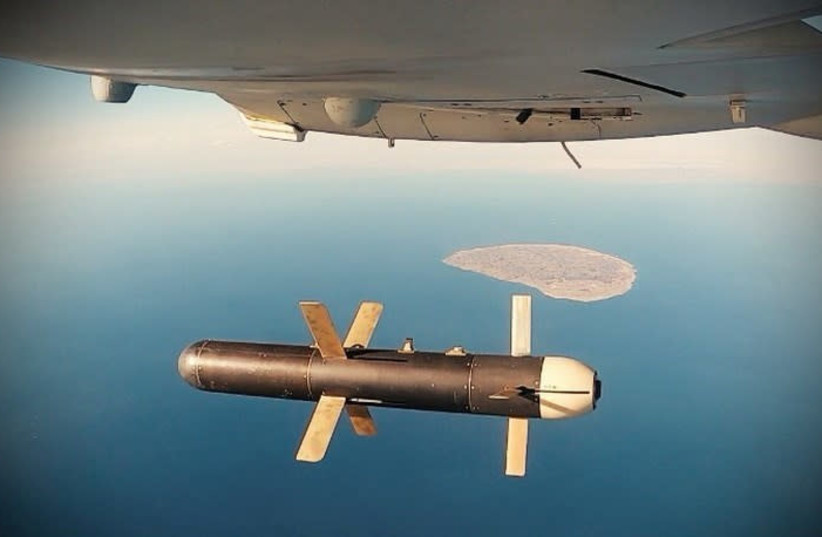On January 27 Iranian-backed militias from Iraq launched a Shahed-style drone at a facility in Jordan where US soldiers are located. They killed three Americans. Overnight between January 31 and February 1, the Iranian-backed Houthis said they struck a merchant ship linked to the US in the Red Sea.
Just before nine in the evening, sirens also sounded in Shlomi in northern Israel, evidence of another Hezbollah attack.
The attacks by Iranian-backed proxies in the region are daily and relentless. Can the trend be reversed?
The attacks by Iran’s proxies in the region didn’t start on October 7. However, they have grown exponentially since the Hamas attack on Israel.
Prior to October 7 the Iranian-backed militias in Iraq and Syria had perpetrated around 90 attacks on US forces since January 2021. They had also carried out dozens of attacks on US forces between 2019 and 2021.


Today the threat is even larger. For instance, on Tuesday evening the IDF said that “a number of launches from Syria toward the southern Golan Heights were identified. In response, IDF fighter jets struck military infrastructure belonging to the Syrian regime in the area of Daraa overnight.”
This means that Iran is attacking on multiple fronts against both the US and Israel, and attacking commercial ships from all over the world.Iran’s attacks have now provoked responses. The US has been striking back at the Houthis. The US has also vowed to respond to the attack in Jordan that killed three Americans.For instance, on January 31 US Central Command said they struck a Houthi UAV and a ground control station in Yemen. Central Command has also begun to describe the drone attacks by the Houthis as “Iranian UAVs.”This points to the Iranian origin and connection to the types of drones being used. In the attack on Jordan for instance the drone was alleged to be a Shahed type, similar to those Iran exports to Russia for attacks on Ukraine.This drone has now become a kind of off-the-shelf export to Iran’s proxies and allies. It’s a kind of nascent version of what the AK-47 rifle was for the Soviets and their proxies.The challenge is how to seize the initiative from Iran
The challenge for the US, Israel and partner countries is how to seize the initiative from Iran. Iran is able to attack locations of its choosing over an arc of several thousand miles.
The arc begins in the Mediterranean where Hezbollah has targeted energy facilities off Israel’s coast, and the arc goes into Lebanon and along the Israel-Lebanon border, then over the Golan into Syria to Tanf where US forces are present, and down to Albukamal in the Middle Euphrates River Valley. There the arc includes US forces along the Euphrates river in places like Green Village and Conoco and Shadadi, which is up a tributary; and then the arc proceeds across Iraq to Erbil and Asad air base in western Iraq, before it goes down to the Persian Gulf and out past the straits of Hormuz around Yemen to the Bab el Mandeb straits and the Red Sea and to Eilat and then Gaza.Iran can choose any place on this massive arc to attack. It has long range capabilities now. showcased with the Shahed drones and Khaiber-Sheykan missile it recently used to target northwest Syria.As such Iran and its proxies can target anywhere within a 1,500-2,000 km. range of their forces. They decide when to attack. In most cases there may be a response.However, as in the case of Jordan, the response may take time. Iran then shifts its forces or its focus to another arena or frontline.Unlike most wars in history where there is a clear frontline or a clear adversary, Iran has created so many proxies and so many places to threaten that it can pop up and then disappear at will. Because most people do not want a large regional war, there is no impetus to dismantle the whole threat.The question then is not whether the whole Iranian proxy octopus can be dismantled, but whether Israel, the US and others will seize the initiative. Iran has been dictating the tempo since October 7. Whether it directly planned October 7 and set the date or merely planned it with Hamas and let Hamas choose the date, is unclear.However, the fact that Iran was able to key in Hezbollah attacks on October 8 and then expand the war to Yemen and cause almost 200 attacks in Iraq and Syria, along with 2,000 rockets fired by Hezbollah and dozens of drone and missile attacks by the Houthis, shows how rapidly Iran was able to take advantage of October 7 and manifest the threat regionally.